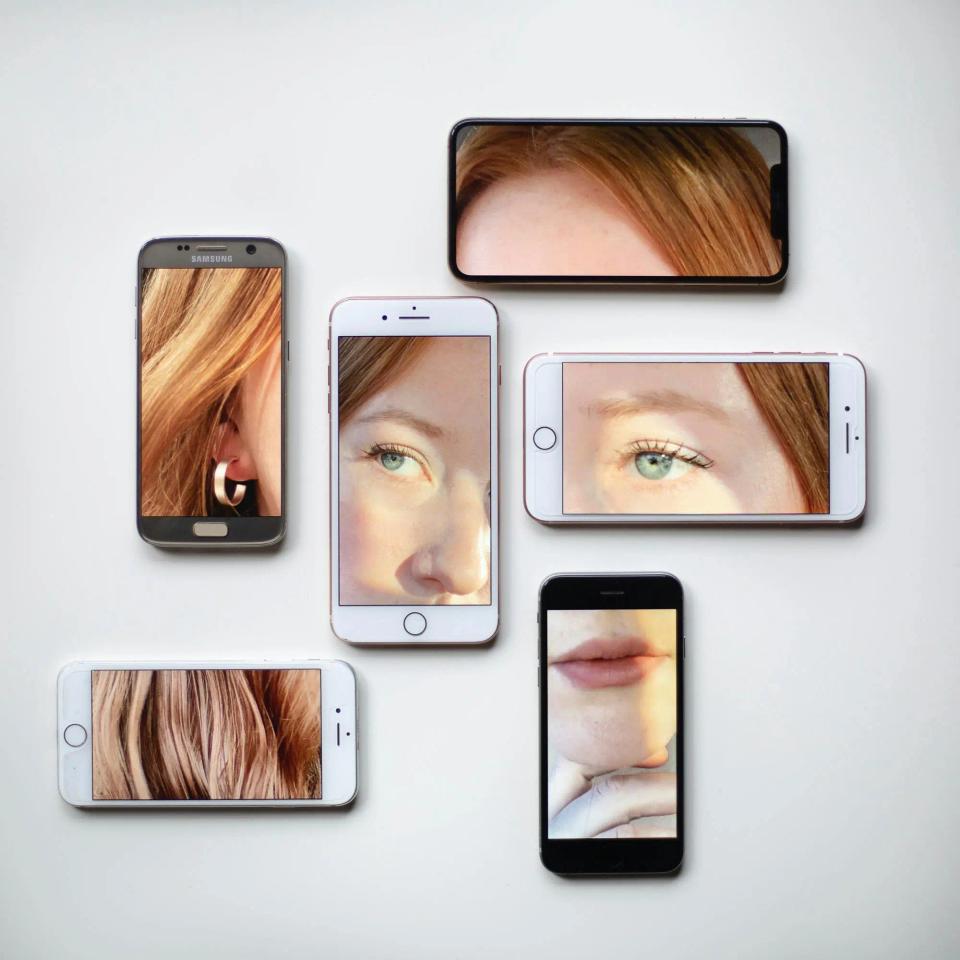Is your brand message getting lost in the digital roar? Do potential customers glance at your materials and walk away, confused about who you truly are? You're not alone. But what if you could cut through the noise, instantly connect, and build unwavering loyalty?
The secret lies in crafting a cohesive brand identity and wielding the power of visual storytelling. These aren't just buzzwords; they are potent tools to carve out your unique space in a crowded market. This guide will illuminate how to strategically fuse stunning visuals with compelling narratives, forging a brand identity that’s not just seen, but felt and remembered across every digital frontier. Imagine increased recognition, unshakable trust, and customer connections that go deeper than a simple transaction. At CaptivateClick, with over 15 years dedicated to building better brands, we've witnessed firsthand the transformative magic this combination ignites.
Defining Cohesive Brand Identity
What truly makes a brand stick? It’s far more than a slick logo or a catchy tagline. A cohesive brand identity is the unified, consistent experience your audience has with your brand – its look, its feel, its voice, and its deeply held values. Think of it as your brand's unique fingerprint, instantly recognizable and always authentic.
This isn't just about looking good; it's about being understood. Consistency is the absolute cornerstone here. Every color, every font, every image, every word must sing from the same hymn sheet, reinforcing who you are at every turn. While industry insights reveal that 78% of consumers recognize brands primarily through their logos, as noted by HubSpot, true cohesion goes layers deeper, weaving through your website's user experience to your customer service interactions.
The Tangible Benefits of Cohesion
Why obsess over cohesion? Because the rewards are massive. A unified brand presence builds immediate trust and credibility. When customers see consistency, they perceive reliability and professionalism. This directly translates to increased brand recognition; they’ll spot you in a crowded marketplace, and more importantly, they’ll remember you.
This powerful recall doesn't just make you memorable; it makes you preferred. A cohesive identity clearly differentiates you from the competition, carving out your unique value proposition. This fosters profound customer loyalty. Indeed, brands that maintain uniform visual identities experience 33% faster trust acquisition, according to HubSpot data. Furthermore, analysis from Investopedia indicates that brands with strong, cohesive visual identities can command price premiums of 17–24% over their less defined competitors. This isn't just branding; it's smart business.
What Exactly is Visual Storytelling?
Now, let's talk about the engine that drives this cohesion: visual storytelling. Forget dry facts and figures for a moment. Visual storytelling is the art and science of using compelling visual elements – your images, colors, typography, and even the layout of your content – to convey a rich narrative, evoke powerful emotions, and communicate your brand’s core values without relying solely on text. It’s about showing, not just telling.
This approach taps into something primal. It’s about forging connections with your audience on an emotional level, making them feel something about your brand. When you tell a story visually, you invite your audience into your world, making your message more engaging, more human, and infinitely more persuasive. This is how you transform passive viewers into active, engaged fans.
Why Visuals Speak Louder Than Words (Often)
Ever wonder why a single image can be so powerful? Our brains are hardwired for it. The human brain processes visuals an astonishing 60,000 times faster than text, as research highlighted by ACS Creative points out. This means your visual story can make an impact in the blink of an eye, long before someone reads a single word.
Moreover, stories are inherently more memorable than isolated facts. We're built to remember narratives. And the beauty of visuals? They often transcend language barriers, a crucial advantage in today's global marketplace. Data further supports this, with studies showing that 90% of information retention occurs through visual stimuli. Consider this: Adobe's 2025 survey insights reveal that a staggering 51% of Gen Z and millennial consumers choose brands based solely on their color schemes, underscoring the immediate emotional punch visual storytelling delivers.
Aligning Your Visuals with Your Core Brand Narrative
To make your visual storytelling truly effective, it must be deeply rooted in your core brand narrative. This is non-negotiable. Before you pick a single color or font, you must first define your brand's story: What is your mission? What is your grand vision for the future? What are the unwavering values that guide every decision? What is your brand's unique personality – is it playful, authoritative, nurturing, or rebellious? And crucially, who is your target audience, and what are their deepest desires and pain points?
Once this foundational narrative is crystal clear, every visual choice you make should stem from and actively reinforce it. Your visuals become the language of your story, speaking directly to the heart of your audience. This strategic alignment is the essence of powerful brand narrative design, ensuring every element works in concert to tell a singular, compelling tale.
Key Visual Elements That Tell Your Story
Several key visual elements act as the building blocks of your brand's narrative. Understanding their power is crucial.
Color Psychology & Palette
Colors aren't just decorative; they're emotional triggers. The right color palette can instantly evoke a specific mood and convey profound meaning. For instance, Adobe’s research indicates blue is perceived as the most trusted color by 54% of consumers, while earthy tones can signal sustainability and eco-consciousness. At CaptivateClick, our deep understanding of design principles helps brands choose palettes that resonate powerfully.
Typography
The fonts you choose are your brand's voice. Are you modern and sleek, or traditional and trustworthy? Playful and energetic, or sophisticated and serene? Typography communicates this instantly. As an example of its impact, NNGroup research found that Medium’s use of the Graphik sans-serif font for headings created a 29% higher perceived authority compared to more generic fonts.
Imagery & Iconography
The style of your photography or illustrations, the subject matter you choose, and the consistent application of icons all contribute to your visual story. Are your images bright and aspirational, or gritty and realistic? Do your icons clearly communicate function and reinforce your brand's aesthetic? Consistency here is paramount.
Logo & Brand Marks
Your logo is the central visual anchor of your brand, the most concentrated expression of your identity. It’s often the first thing people see and the element they’ll remember most. A well-designed logo is a critical component of your visual storytelling arsenal, a topic we explore further in transforming brand identity with logo design.
Layout & Composition
How you arrange these elements on a page or screen dramatically affects how your story is received. Good layout and composition guide the viewer's eye, create a clear hierarchy of information, and ensure clarity. This is especially vital for effective UI/UX design, ensuring your digital platforms are not just beautiful but also intuitive and user-friendly.
Step 1: Define Your Brand's Core Story & Message
Ready to build this powerful visual narrative? The journey begins with introspection. You must dig deep and answer fundamental questions: Who are you as a brand, at your very core? What unique value do you bring to the world, and what do you passionately stand for? Who, precisely, are you trying to reach, and what are their unspoken needs and aspirations?
Most importantly, what do you want your audience to feel when they encounter your brand? What action do you ultimately want them to take? Answering these questions with unflinching honesty lays the groundwork for a visual story that is authentic, resonant, and undeniably you. This clarity will be your compass.
Step 2: Translate Your Story into a Visual Moodboard & Style Guide
With your core story defined, it's time to translate those abstract concepts into tangible visual ideas. This is where moodboards and initial style guides come into play. Start gathering inspiration: images, textures, color swatches, typography examples, and anything else that visually captures the essence of your brand's narrative and personality. Platforms like Canva offer excellent tools for building brand mood boards, helping you collate these ideas.
From this creative exploration, begin to define your core visual elements. Select a primary and secondary color palette that evokes the desired emotions. Choose typefaces that reflect your brand's voice. Establish a style for your imagery and iconography. This initial guide acts as a visual blueprint, ensuring your emerging identity is aligned with your story. For instance, Burger King’s meticulously defined style guide, mandating "unapologetically full" colors and macro photography, has resulted in Instagram engagement rates 2.3 times the industry average, as highlighted by HubSpot.
Step 3: Develop Comprehensive Brand Guidelines
Once your visual direction is established, the next critical step is to document it in comprehensive brand guidelines. Think of this as the ultimate rulebook for your brand's visual (and verbal) identity. It’s the single source of truth that ensures consistency across every single application, no matter who is creating content for your brand. This document is vital for maintaining the integrity of your cohesive brand identity.
What should these guidelines include? Essential components are rules for logo usage (clear space, minimum size, incorrect uses), precise color codes (CMYK, RGB, Hex), typography hierarchies and rules (fonts, weights, sizes for headlines, body copy, captions), image style directives (tone, subject matter, composition), and even guidance on your brand's tone of voice. As an example of meticulousness, Lucid Software’s brand guidelines specify exact HEX/RGB values to ensure consistent color rendering across all digital devices. For a deeper dive into integrating these elements, explore our comprehensive guide to integrated branding and website design.
Step 4: Consistent Application Across All Touchpoints
Your brilliant brand guidelines are only effective if they are rigorously applied. Consistency is king, and it must reign supreme across every single touchpoint where your audience encounters your brand. This is where your visual storytelling truly comes to life, building recognition and trust with every interaction.
Your website and mobile apps are prime real estate for visual storytelling, directly impacting user experience and conversion rates; discover more about creating a cohesive brand identity with strategic website design. Social media platforms demand adaptability, requiring you to tailor visuals for different formats while fiercely protecting your core identity – a principle we apply even in SEM ad creative. Don't forget marketing materials like digital ads, email campaigns, and presentations, or even physical touchpoints such as packaging and print collateral if applicable. Each one is an opportunity to reinforce your narrative.
Step 5: Audit, Iterate, and Evolve
Building a powerful brand identity isn't a one-and-done task. The market shifts, consumer preferences evolve, and your business will grow. Therefore, your branding must be a living, breathing entity, capable of adaptation while staying true to its core. Regularly audit your brand's visual presence across all touchpoints.
Are your visuals still effectively telling your story? Is your identity consistent everywhere? Are there new opportunities to connect with your audience visually? Don't be afraid to iterate and refine. This proactive approach ensures your brand remains relevant, resonant, and robust. Remember, brands that maintain consistent identities through such diligence retain 68% more customers during economic downturns, according to Brandfolder insights, proving the long-term value of this vigilance.
Brands That Nail Cohesive Visual Storytelling
Some brands just get it. Consider Apple. Their "Shot on iPhone" campaign is a masterclass in visual storytelling, using user-generated content to showcase the product's capabilities while subtly reinforcing a narrative of creativity, quality, and community. The visuals are consistently clean, aspirational, and human-centric.
Then there's Nike. Their "Dream Crazy" campaign, featuring bold typography and emotionally charged imagery, didn't just sell shoes; it sold inspiration and empowerment. This powerful visual narrative led to a reported 31% surge in brand affinity. These brands understand that every visual choice, from global campaigns to app icons, contributes to a singular, powerful story.
CaptivateClick's Approach: Bringing Brands to Life
At CaptivateClick, we live and breathe this philosophy. We believe that the most powerful brands are built on a foundation of authentic storytelling, brought to life through strategic and cohesive visual design. For example, when we embarked on the Fjällbris project, a Swedish outdoor brand, our focus was on crafting a visual narrative that embodied Nordic minimalism and the tranquility of Scandinavian landscapes.
We developed a specific color palette of ice blue and pine green, paired clean, modern typography with approachable body text, and utilized long-exposure nature photography. The impact was tangible: post-launch analytics showed a 47% increase in time-on-site and an impressive 22% higher conversion rate. This is the power of aligning narrative with visuals, a core principle in how we help clients like LexEnergy and others transform their brand identity through compelling logo design and visual storytelling.
Your Brand's Story, Beautifully and Cohesively Told
In today's fiercely competitive landscape, a cohesive brand identity isn't a luxury; it's a fundamental necessity. And visual storytelling is undeniably one of the most potent vehicles to achieve that cohesion, forging deep, emotional connections that transcend mere transactions. When your visuals and your narrative sing in perfect harmony, you create a brand that is not only instantly recognizable but also profoundly memorable and deeply trusted.
The benefits are clear: stronger customer bonds, increased loyalty, and a distinct competitive edge. Your brand has a unique story to tell. Isn't it time the world saw it, felt it, and remembered it, beautifully and cohesively?
Ready to craft a compelling visual story that builds a truly cohesive brand identity? The creative strategists and designers at CaptivateClick are here to help. Contact us today for a consultation.
Explore our Integrated Branding Guide and Strategic Website Design insights to see how we can elevate your brand.













